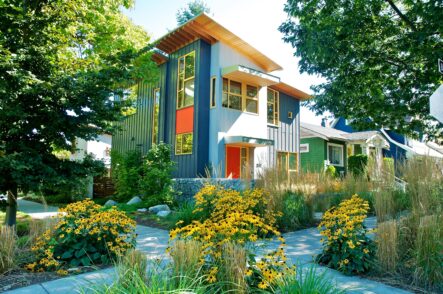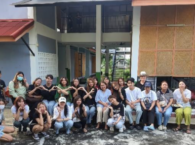University of Oregon students present a development vision for downtown Tigard
Real estate development students explore mixed use development, real estate, and affordable housing in Tigard ahead of new transit center
Metrics
Community
TriMet, Portland, ORCommunity Size
2,478,810 (2018 Census Estimation)University
University of OregonProgram
Sustainable City Year ProgramYears
2017-2018Status
CompletedCase Type
Project StoriesDiscipline
ArchitectureSustainable Development Goals
9 Industry Innovation and InfrastructureTriMet is a public agency that operates a network of bus, light rail and commuter rail transit services throughout the Portland, Oregon region. The agency is currently in the middle of the Southwest Corridor (SWC) project, “an ongoing plan to expand its light rail system by adding a new 12-mile line in southwest Portland and southeast Washington County” (WRTWC) that will connect downtown Portland with the cities of Tigard and Tualatin. The construction of the light rail presents opportunities for innovation on a host of peripheral projects in fields like urban planning, sustainability, technology, and land use.

A planned transit center in the city of Tigard gets the wheels turning
TriMet planned to build a transit center at a major Southwest Corridor light rail stop adjacent to downtown Tigard. The organization hoped the transit center would expand upon the existing downtown hub, which currently serves local bus and commuter rail riders, while also functioning as a destination on its own. By 2040, the population of the Southwest Corridor region is expected to grow by about 75,000 residents and 60,000 jobs, promising heightened economic activity and myriad development opportunities. Aware of this growth, TriMet and stakeholders in the city of Tigard sought to stimulate regional real estate development in tandem with the transit center construction project.
Students hone in on land use, development, and real estate
Moving forward, TriMet partnered with Instructor Ian Carlton’s Real Estate Development Seminar at the University of Oregon through the Sustainable City Year Program (SCYP). Students were challenged to evaluate the planned Tigard Transit Center region’s mixed use development potential. Beginning with an analysis of the existing real estate market, they compared rent and sale prices, studied regional case studies alongside plans for future property investment, and documented present land usage and building ownership. Participants then carefully assessed the area in question with a consideration for land use types, available parking, and return on cost.
Bold, transit-oriented recommendations for the city center
The final student report provides TriMet with robust visions and development recommendations for the Tigard Transit Center and adjacent area. It presents seven comprehensive development proposals for separate sites, each with a tailored cost analysis and proposed phasing. These proposals include:
- A housing oriented plan to unite downtown Tigard with nearby Fanno Creek
- Improving livability and public greenspace through community gardens
- Creating connections between commercial corridors and residential streets/natural walking paths
The report also includes a mixed use development breakdown comparing rental, office, and retail zoning potential, regional and project specific financial analyses, and a feasible off-site parking system.
This SCYP collaboration delivered actionable results for an urban site with rich development potential. Student participants advanced TriMet and Tigard stakeholders’ residential and real-estate zoning objectives and devised concepts for a creatively connected city.
Sustainable City Year Program Contact Info
Sustainable City Year Program Manager
mbanks@uoregon.edu
(541) 346-6395
https://sci.uoregon.edu/sustainable-city-year-program-0


